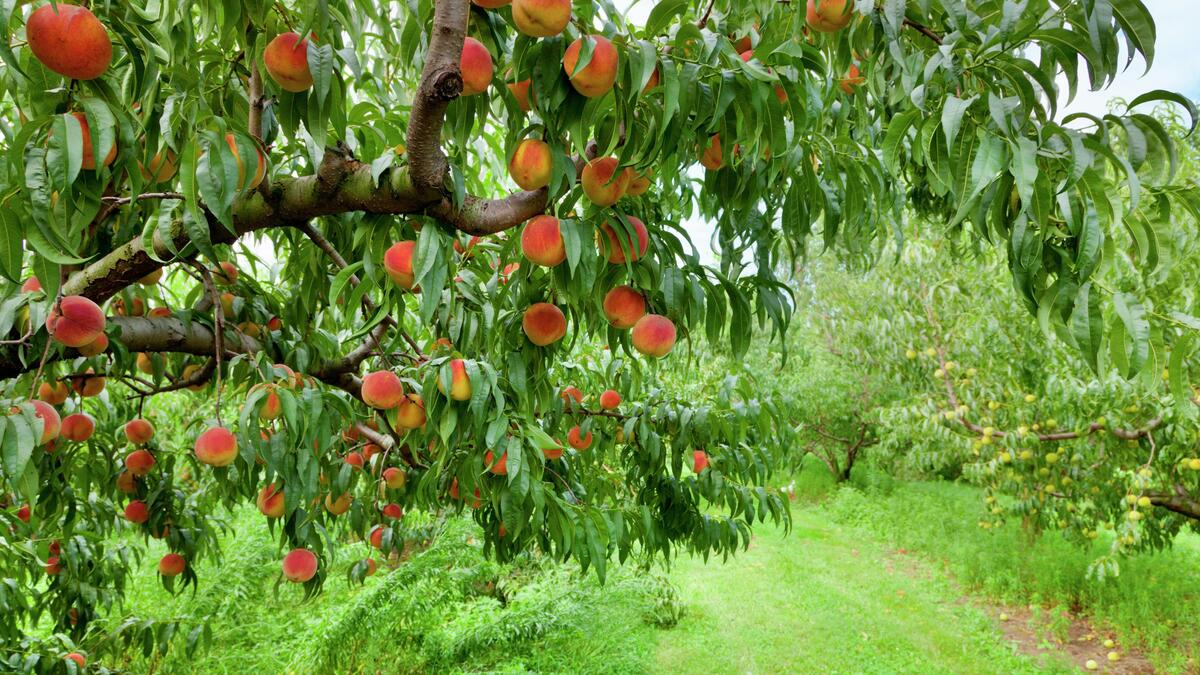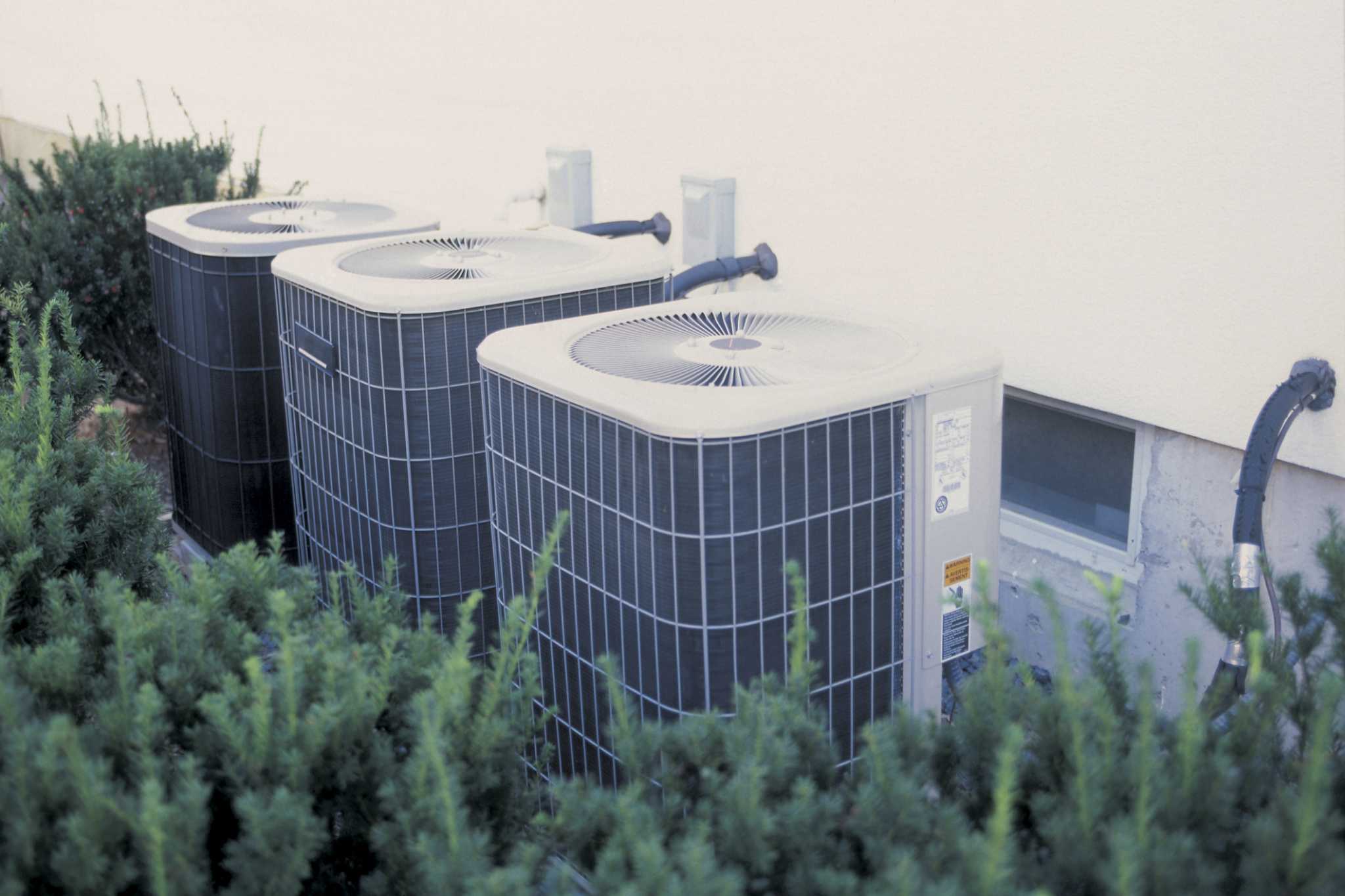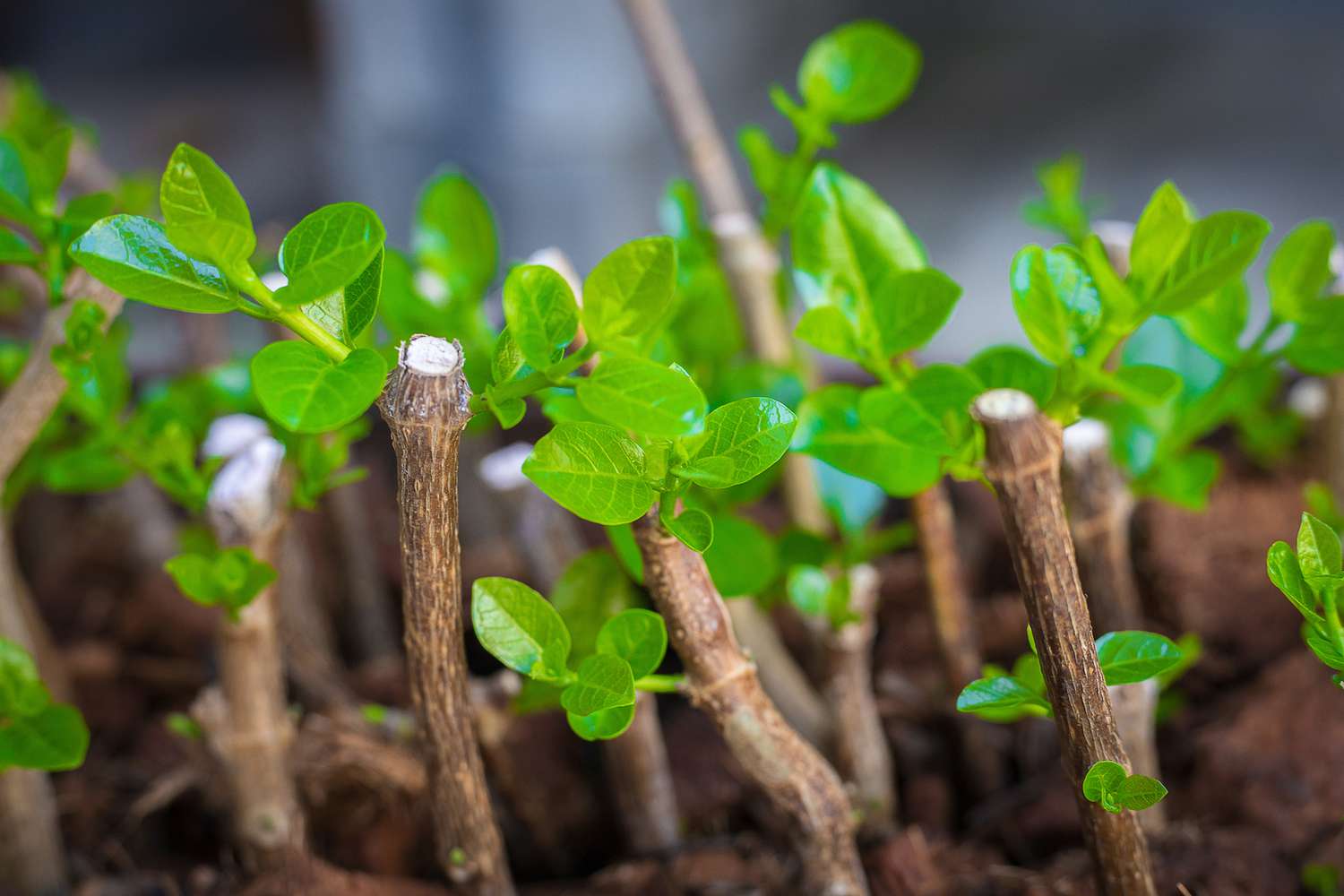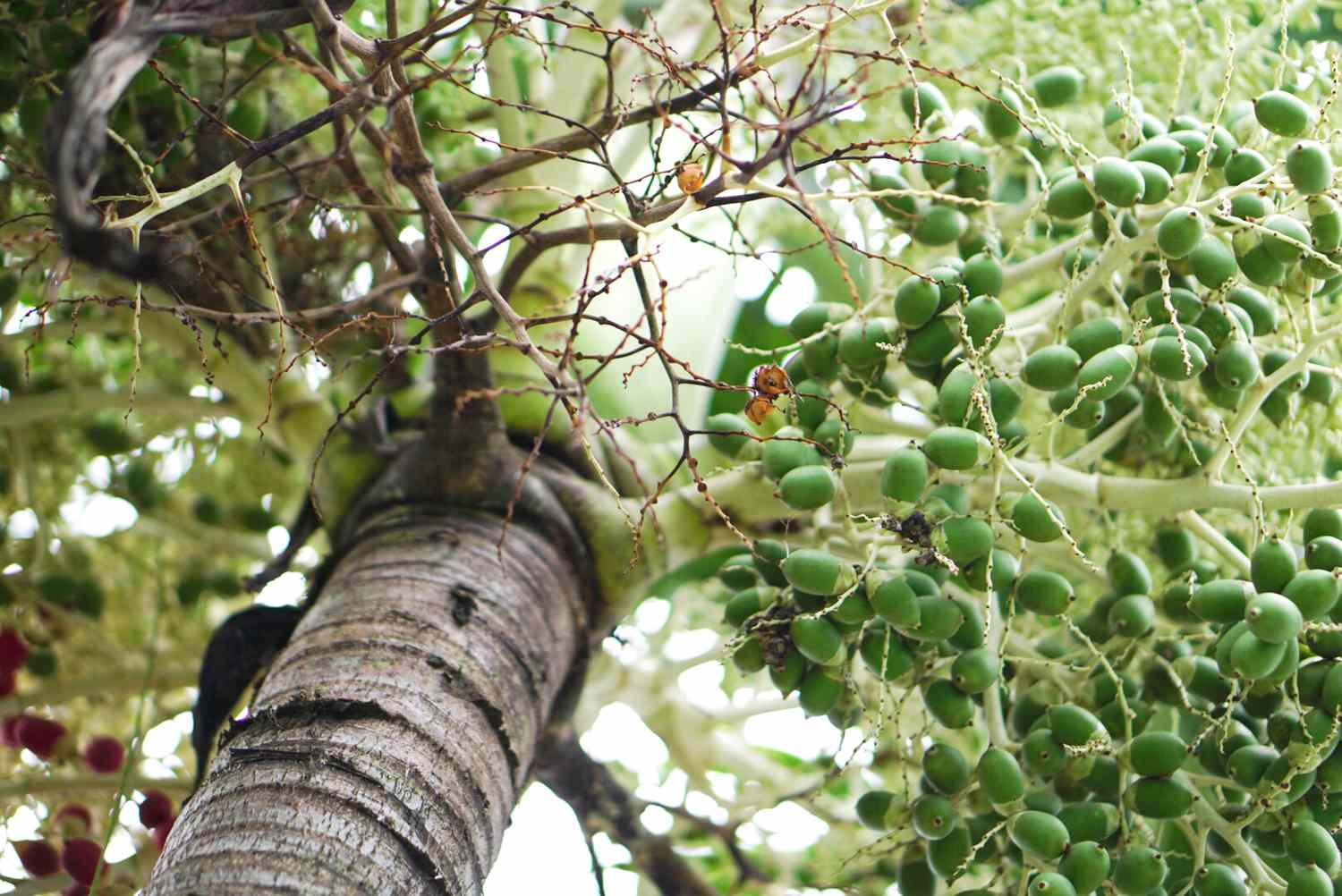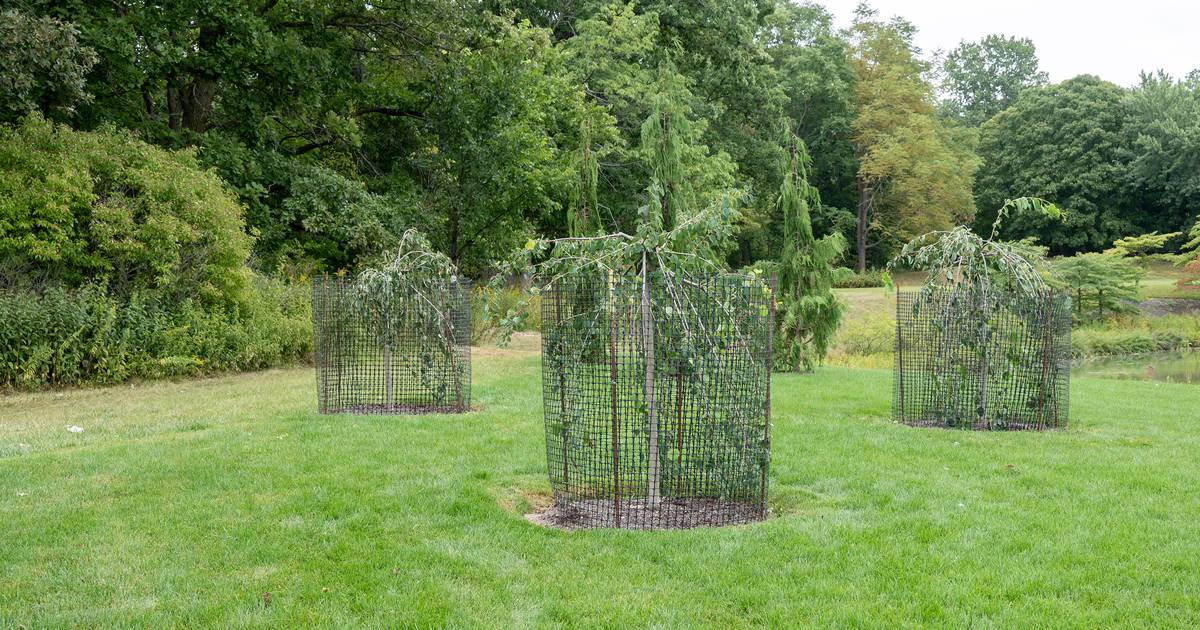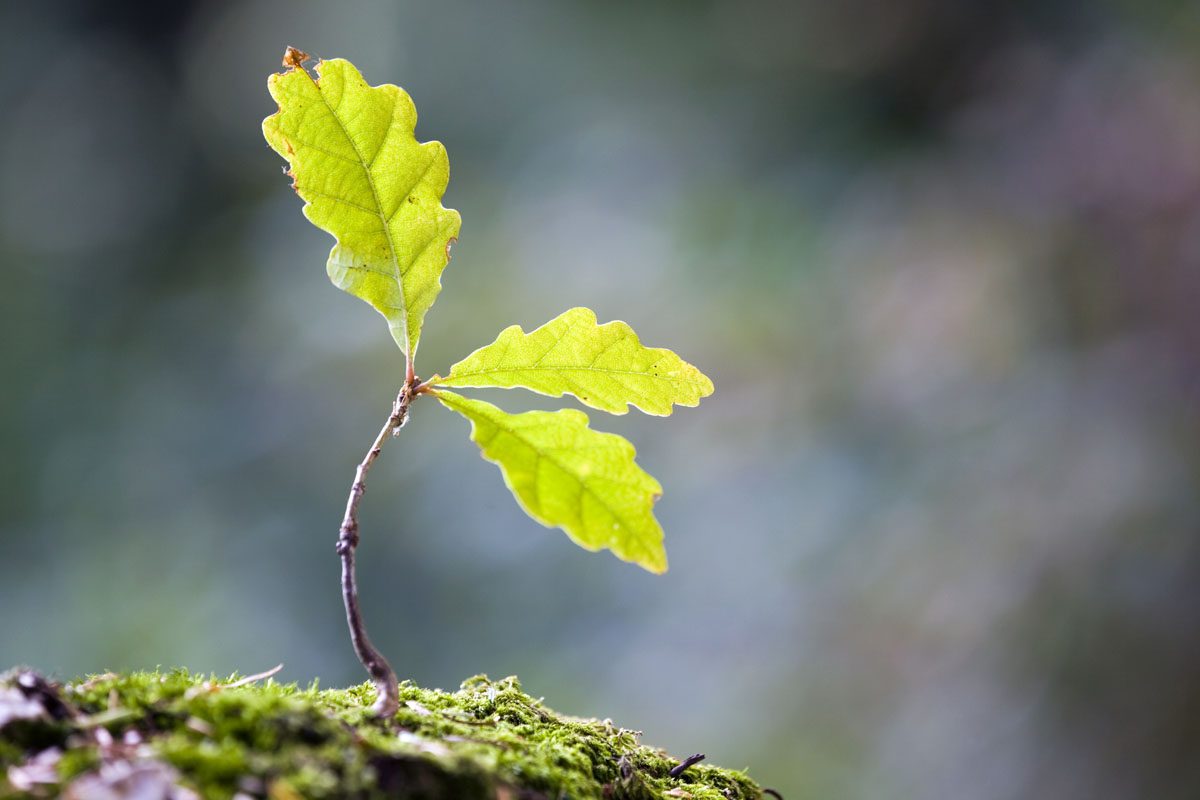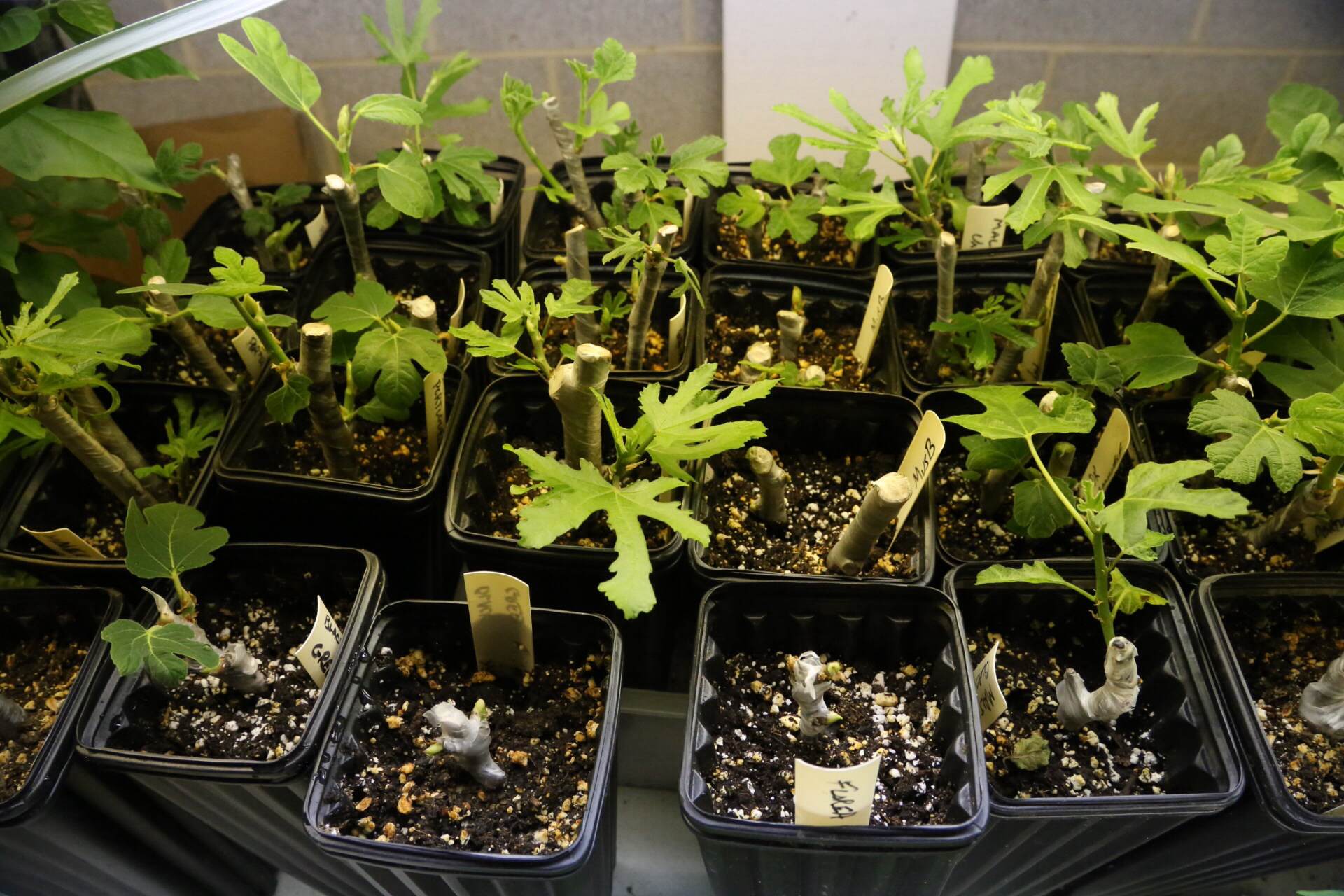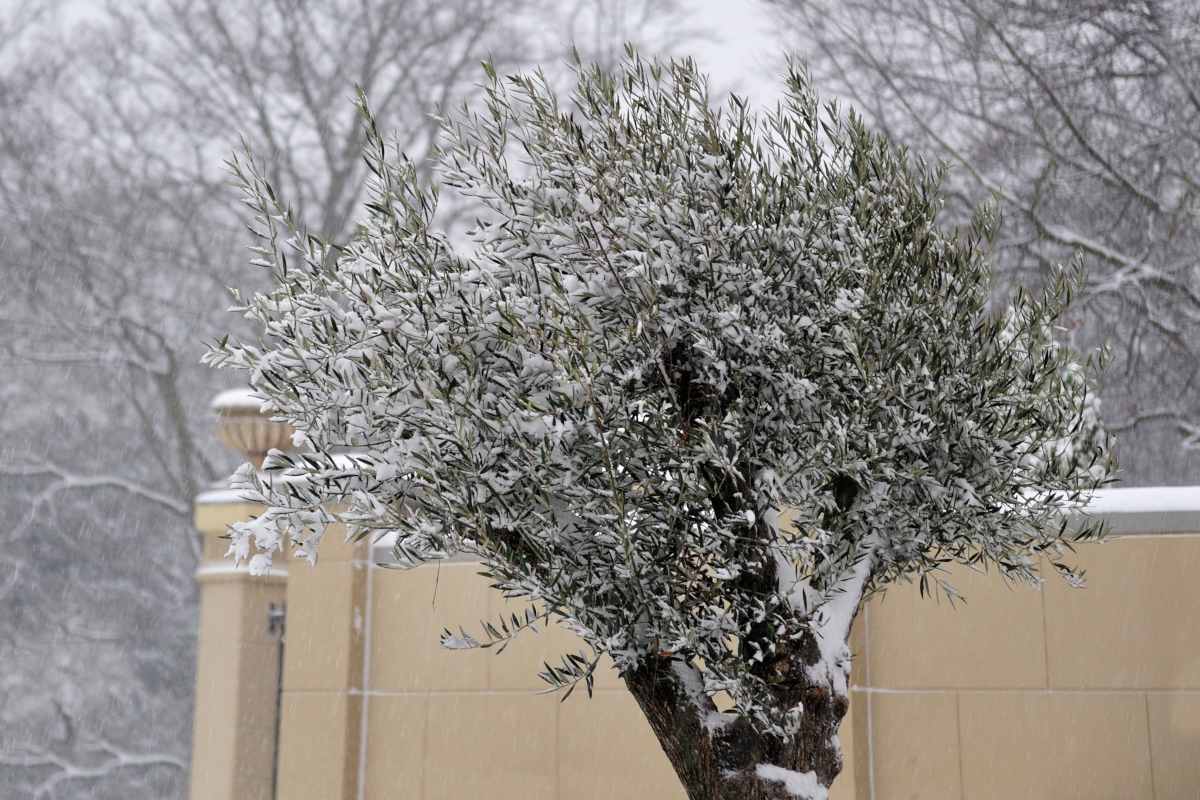Home>Gardening Basics>Understanding Soil>How Far Should Trees Be From Leach Field


Understanding Soil
How Far Should Trees Be From Leach Field
Modified: January 22, 2024
Learn how understanding soil can help you determine the optimal distance for trees from your leach field to prevent damage and maintain a healthy septic system.
(Many of the links in this article redirect to a specific reviewed product. Your purchase of these products through affiliate links helps to generate commission for Chicagolandgardening.com, at no extra cost. Learn more)
Table of Contents
Introduction
Proper tree placement is crucial when it comes to maintaining the health and functionality of a leach field. A leach field, also known as a drain field or septic drain field, is an integral part of a septic system that helps to filter and treat wastewater. It is typically comprised of a network of perforated pipes buried in gravel-filled trenches. These pipes distribute the effluent from the septic tank into the surrounding soil, where it is further treated and absorbed.
While trees provide numerous benefits, such as shade, privacy, and improved air quality, planting them too close to a leach field can have detrimental effects. The roots of trees seek out sources of water and nutrients, and if they infiltrate the leach field, they can cause damage and disruption to the drainage system. This can result in clogging, reduced wastewater treatment, and potentially costly repairs.
In this article, we will explore the importance of proper tree placement to ensure the health and longevity of a leach field. We will discuss the factors to consider when deciding where to plant trees near a leach field and the recommended distance that should be maintained. Additionally, we will examine the consequences of planting trees too close to a leach field and the benefits of appropriate tree placement. Lastly, we will provide strategies for planting trees near leach fields that minimize the risk of damage and promote the coexistence of trees and septic systems.
Importance of Proper Tree Placement
The placement of trees around a leach field is a critical consideration for maintaining the functionality and longevity of the septic system. Trees can have extensive root systems that extend far beyond their visible above-ground structures. These roots are designed to seek out water and nutrients, and if they infiltrate the leach field, it can lead to a host of problems.
One of the primary reasons for proper tree placement is to prevent root intrusion into the leach field. When tree roots penetrate the pipes or the surrounding gravel-filled trenches, they can cause blockages, leading to reduced or interrupted wastewater flow. This can result in backups, foul odors, and potential contamination of the surrounding soil and groundwater.
Beyond root intrusion, trees planted too close to a leach field can also have an impact on the overall moisture balance in the soil. The excessive water uptake by the tree roots can create a moisture imbalance, disrupting the normal functioning of the leach field. Excessive moisture can saturate the soil, leading to poor drainage and potential failure of the septic system.
Proper tree placement also takes into consideration the physical structure of the drain field. The weight and growth of trees can exert pressure on the pipes and trenches, causing them to crack or collapse. This can result in leaks, further impairing the functionality of the septic system.
Another consideration is the nutrient uptake by trees. The roots of trees near a leach field may absorb the nutrients present in the wastewater. While this might seem beneficial, it can cause an imbalance in the system’s nutrient distribution, negatively impacting the treatment process and potentially leading to the accumulation of solids in the drain field.
By understanding the importance of proper tree placement, homeowners can ensure the long-term efficiency and effectiveness of their septic systems. Careful consideration and planning during tree planting can help prevent issues such as root intrusion, moisture imbalance, physical damage, and nutrient imbalance. This ultimately contributes to a healthy and functional septic system and minimizes the need for expensive repairs or replacements.
Factors to Consider
When determining the appropriate placement of trees near a leach field, there are several important factors to consider. These factors can help guide homeowners in making informed decisions to ensure the health and functionality of both the trees and the septic system.
1. Distance: The distance between trees and the leach field is a critical factor. A significant distance helps minimize the chances of tree roots infiltrating the drain field. The specific distance may vary depending on the type of trees and the size of the leach field, but a general recommendation is to maintain a distance of at least 50 feet between the trees and the septic system.
2. Type of trees: Not all trees have the same root structures. Some trees have more invasive root systems that are more likely to cause damage to the drain field. Researching the root characteristics of different tree species can help homeowners select trees that have less aggressive root systems and are less likely to infiltrate the leach field.
3. Growth rate: The growth rate of trees should also be taken into consideration. Trees that have rapid growth rates might quickly outgrow the recommended distance, potentially endangering the septic system. Choosing trees with slow to moderate growth rates can help ensure long-term compatibility with the leach field.
4. Size and structure of the leach field: The size and structure of the leach field can influence the placement of trees. If the drain field is relatively small or has limited space, it’s essential to keep trees further away to prevent potential root intrusion. Additionally, the layout of the leach field, such as the arrangement of pipes and trenches, should be considered to avoid physical damage caused by trees’ root systems.
5. Soil conditions: The type and condition of the soil surrounding the leach field should also be taken into account. Certain soil types, such as clay or compacted soils, can be more prone to root penetration. If the soil is already compromised, it’s advisable to plant trees even further away to minimize the risk of damage to the leach field.
By considering these factors, homeowners can make informed decisions about tree placement near a leach field. Taking into account the distance, tree type, growth rate, leach field size, and soil conditions can help create a harmonious coexistence of trees and the septic system, reducing the potential for damage and ensuring the long-term health and functionality of both.
Recommended Distance between Trees and Leach Field
When it comes to planting trees near a leach field, maintaining an adequate distance is crucial to prevent root intrusion and potential damage to the septic system. While the specific distance may vary depending on various factors, including tree species and leach field size, there are general guidelines to follow.
A commonly recommended distance between trees and a leach field is at least 50 feet. This distance helps ensure that the root systems of trees do not encroach upon the drain field. However, it is important to note that some tree species, especially those with aggressive or invasive root systems, may require an even greater distance.
Consider the growth habit and root structure of the trees you plan to plant. Trees with shallow, spreading root systems are more likely to cause problems for the leach field. Opting for trees with taproot systems or deep-rooted characteristics can be a safer choice as their roots are less likely to interfere with the septic system.
Additionally, it is essential to consider the size and structure of the leach field. If the drain field is smaller or has limited space due to other landscape features, it is advisable to increase the distance between the trees and the leach field to minimize the potential for root intrusion.
Soil conditions also play a role in determining the recommended distance. Clay or compacted soils, for example, are more susceptible to root penetration. In such cases, it is wise to maintain an even greater distance between the trees and the leach field to reduce the risk of root infiltration.
Ultimately, it is best to consult with a knowledgeable arborist or septic professional who can assess site-specific conditions and provide tailored recommendations. These experts can consider factors such as local regulations, tree species, site layout, and soil conditions, helping to determine the most suitable distance between trees and the leach field for optimal septic system health.
Remember, maintaining the recommended distance between trees and a leach field not only prevents potential damage to the septic system but also ensures the long-term health and functionality of the trees. By allowing enough space for proper root development and avoiding interference with the drainage system, homeowners can enjoy the benefits of trees without compromising the performance of their septic system.
Consequences of Trees Planted Too Close to Leach Field
Planting trees too close to a leach field can have several negative consequences that can compromise the functionality and lifespan of the septic system. It is crucial to understand and be aware of these consequences to prevent potential issues.
One of the most significant consequences of trees planted too close to a leach field is root intrusion. The roots of trees naturally seek out water and nutrients, and if they infiltrate the drain field, they can cause blockages in the pipes and hinder the flow of wastewater. This can lead to backups, slow drainage, and even complete failure of the septic system.
In addition to root intrusion, trees planted near the leach field can disrupt the moisture balance in the soil. Trees have a significant water uptake, and their roots can draw excessive moisture from the surrounding area. This can lead to oversaturation of the drain field, impairing its drainage capabilities and compromising the treatment of wastewater.
Furthermore, the physical structure of the drain field can be affected by trees planted too closely. As trees grow, their roots expand and exert pressure on the pipes and trenches. This pressure can lead to cracks, leaks, or even collapse of the system, resulting in costly repairs or replacements.
Another consequence is the nutrient uptake by trees. The roots of trees near a leach field can absorb nutrients present in the wastewater, disrupting the natural balance of nutrient distribution in the septic system. This can impair the treatment process and potentially lead to the accumulation of solids in the drain field, reducing its effectiveness over time.
Additionally, the shade cast by trees can hinder the proper evaporation of moisture from the leach field. The lack of sunlight and increased moisture can foster the growth of algae and fungi, further compromising the drainage capabilities and overall health of the septic system.
It is important to note that the consequences of trees planted too close to a leach field may not be immediately noticeable. Issues can develop gradually over time, and by the time they are detected, significant damage may have already occurred. Regular inspection and maintenance of the septic system are crucial in identifying and addressing any potential problems.
By understanding the consequences of planting trees too close to a leach field, homeowners can make informed decisions about tree placement and take the necessary precautions to protect their septic system. Maintaining adequate distance and selecting tree species with non-invasive roots can help prevent root intrusion and the associated issues, ensuring the long-term functionality and efficiency of the septic system.
Benefits of Appropriate Tree Placement
While it is crucial to avoid planting trees too close to a leach field, there are several benefits to be gained from appropriate tree placement. Strategic positioning of trees can enhance the overall environment, provide aesthetic appeal, and support the health and longevity of the septic system.
One of the significant benefits of appropriate tree placement is shading. Well-positioned trees can provide shade to the leach field, helping to regulate soil temperature and reducing evaporation. By creating a cooler environment, the trees can assist in maintaining optimal conditions for the wastewater treatment process, preventing excessive drying out of the soil and enhancing the overall efficiency of the septic system.
Trees can also play a significant role in reducing erosion and promoting soil stability around the leach field. Their root systems help bind the soil, preventing erosion caused by wind or water runoff. This is particularly beneficial in areas with sloping terrain or vulnerable soil conditions, where erosion can pose a risk to the integrity of the septic system.
Additionally, appropriate tree placement can enhance the overall aesthetics of the property. Trees can provide natural beauty, privacy, and a sense of serenity. They can create a welcoming landscape and improve the curb appeal of the property. By carefully planning the placement of trees, homeowners can create a pleasant environment while still safeguarding the functionality of the septic system.
Another benefit is the positive impact of trees on air quality. Trees absorb carbon dioxide and release oxygen, contributing to a healthier environment. By strategically planting trees away from the leach field, homeowners can enjoy the benefits of improved air quality without compromising the integrity of the septic system.
Biodiversity is also enhanced through appropriate tree placement. By selecting a variety of tree species and planting them in the right locations throughout the property, homeowners can encourage a diverse ecosystem. This can attract a range of wildlife, including birds, insects, and small mammals, creating a thriving and balanced environment.
Lastly, trees provide many psychological and emotional benefits. Their presence can create a tranquil atmosphere, help reduce stress, and contribute to an overall sense of well-being. Properly placed trees can offer a peaceful retreat and a connection to nature, enhancing the quality of life for homeowners.
By considering all these benefits, homeowners can see that appropriate tree placement can have a positive impact on both the environment and the health of the septic system. With careful planning and selection, trees can coexist harmoniously with the septic system, enhancing the overall beauty and functionality of the property.
Strategies for Planting Trees near Leach Fields
Planting trees near a leach field requires careful consideration and strategic planning to ensure the optimal coexistence of the trees and the septic system. By following these strategies, homeowners can mitigate the potential risks and enjoy the benefits of having trees on their property.
1. Research tree species: Before planting trees near a leach field, research different tree species to identify those with non-invasive root systems. Select tree varieties with taproot systems or deep-rooted characteristics that are less likely to cause damage to the septic system.
2. Assess distance: Determine the recommended distance between the trees and the leach field based on factors such as tree type, growth rate, leach field size, and soil conditions. Aim to maintain a distance of at least 50 feet between the trees and the septic system, and consider increasing this distance for more aggressive root systems or site-specific conditions.
3. Plan tree placement: Carefully plan the placement of trees to ensure they do not interfere with the physical structure of the leach field. Avoid planting trees directly above or near the pipes or trenches. Instead, position them further away, taking into account the projected size and spread of the tree’s canopy and root system.
4. Regular maintenance: Implement a regular maintenance routine to monitor the growth and health of the trees near the leach field. Ensure that trees are pruned as necessary to prevent them from encroaching on the septic system. Regular tree maintenance can also help promote healthy growth, prevent disease or pest infestations, and reduce the risk of falling branches or other tree-related hazards.
5. Monitor soil moisture: Keep an eye on the moisture levels in the soil surrounding the leach field. Avoid overwatering the trees, as excessive moisture can lead to saturation of the drain field. If necessary, use irrigation systems or techniques that target the specific needs of the trees without impacting the functionality of the septic system.
6. Consult with professionals: When in doubt, seek guidance from arborists or septic system professionals who have expertise in tree planting and septic system maintenance. They can provide valuable insights and recommend specific tree species or planting techniques that are suitable for the unique circumstances of the property.
Remember, proper tree placement and maintenance are essential to ensure a harmonious coexistence between trees and the leach field. By implementing these strategies, homeowners can enjoy the numerous benefits of trees while safeguarding the functionality and longevity of their septic systems.
Conclusion
Proper tree placement near a leach field is crucial for maintaining the health and functionality of the septic system. By considering factors such as distance, tree species, growth rates, leach field size, and soil conditions, homeowners can minimize the risks of root intrusion, moisture imbalance, physical damage, and nutrient imbalance.
Planting trees too close to a leach field can lead to root intrusion, which can result in blockages, reduced wastewater flow, and potential system failure. Additionally, trees planted near the leach field can disrupt the moisture balance, cause physical damage to the system, and impact nutrient distribution.
However, appropriate tree placement offers several benefits. Well-positioned trees can provide shade, reduce erosion, enhance aesthetics, contribute to improved air quality, and support biodiversity. Trees can create a peaceful atmosphere and provide a connection to nature, enhancing the overall quality of life for homeowners.
To ensure successful tree planting near a leach field, homeowners should research tree species with non-invasive root systems, assess the recommended distance, plan tree placement to avoid interference with the drain field, practice regular maintenance, monitor soil moisture levels, and consult with professionals when needed.
By following these strategies, homeowners can strike a balance between enjoying the beauty and benefits of trees while preserving the functionality and longevity of their septic systems. With careful planning and proper maintenance, trees and septic systems can coexist harmoniously, creating a healthy and sustainable environment for homeowners to enjoy for years to come.
